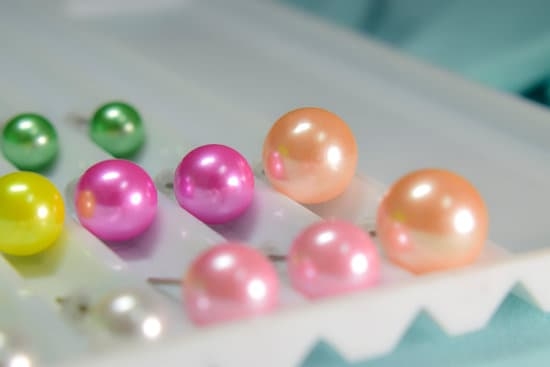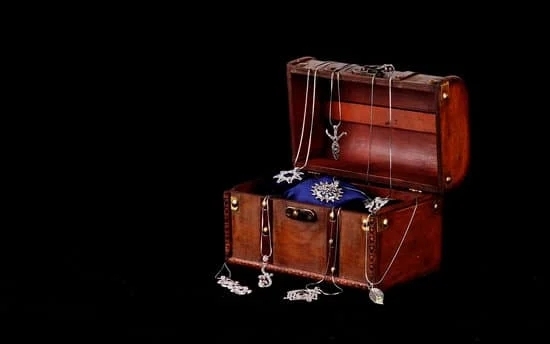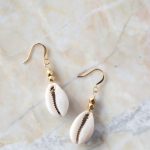The history and meaning of ancient Egyptian jewelry can be traced back to the significance it held in the culture and society of ancient Egypt. Jewelry not only served as adornment but also carried deep cultural and religious meanings, making it an integral part of daily life and important ceremonial practices. The evolution of ancient Egyptian jewelry is a testament to the craftsmanship, symbolism, and materials used by artisans, reflecting the rich tapestry of ancient Egyptian civilization.
Ancient Egyptian jewelry holds a unique place in history for its impact on both fashion and religious practices. From intricate designs to the use of precious materials and gemstones, these pieces were not only decorative but also imbued with symbolism that reflected the values and beliefs of ancient Egyptian society. The influence of mythology and religious beliefs in the design of jewelry further highlights its importance as more than just accessories.
The enduring legacy of ancient Egyptian jewelry has continued to captivate modern scholars and fashion enthusiasts alike. Through an exploration of its evolution, materials used, symbolism, and cultural significance, we can gain deeper insights into this timeless art form that continues to inspire contemporary design and preservation efforts.
The Evolution of Ancient Egyptian Jewelry
The history and meaning of ancient Egyptian jewelry is a fascinating topic that sheds light on the cultural and societal significance of jewelry in ancient Egypt. The evolution of ancient Egyptian jewelry reflects the artistic, religious, and symbolic elements that were integral to the civilization’s identity. Through the centuries, ancient Egyptian jewelry underwent significant changes in style, materials, and design, illustrating the complex evolution of this art form.
Styles and Materials
Ancient Egyptian jewelry encompassed a wide variety of styles and materials, ranging from simple amulets to intricate necklaces and bracelets. Gold was highly prized by the ancient Egyptians and was used extensively in their jewelry making.
Furthermore, gemstones such as lapis lazuli, turquoise, carnelian, and garnet were also utilized to create vibrant and colorful pieces. The use of precious metals and gemstones reflected the wealth and status of the wearer, making jewelry an important aspect of social hierarchy in ancient Egyptian society.
Mythology and Symbolism
The design of ancient Egyptian jewelry was heavily influenced by mythology and symbolism. Certain motifs such as the ankh, scarab beetle, lotus flower, and the Eye of Horus held deep significance in ancient Egyptian culture. These symbols were believed to provide protection, guidance, and blessings to the wearer. Additionally, certain jewelry designs were associated with specific deities or religious beliefs, further emphasizing the spiritual importance of jewelry in ancient Egypt.
Craftsmanship
The craftsmanship involved in creating ancient Egyptian jewelry was highly sophisticated for its time. Jewelry makers employed intricate techniques such as filigree work, granulation, cloisonné enameling, and stone carving to produce exquisite pieces. The level of detail and precision in these creations exemplified the advanced skills of ancient Egyptian artisans. Furthermore, many pieces also featured elaborate engravings or inscriptions that added a personal touch or conveyed a specific message or sentiment.
The Evolution of Ancient Egyptian Jewelry
, it becomes evident that it served not only as adornment but also as a form of expression deeply rooted in history and tradition. The styles, materials used in their creations all served different purposes reflecting not only social status but also spirituality thus proving their timeless appeal even today.
Materials Used in Ancient Egyptian Jewelry
Ancient Egyptian jewelry is renowned for its exquisite craftsmanship and the use of luxurious materials. The history and meaning of ancient Egyptian jewelry can be seen through the various precious materials and gemstones that were used in creating these stunning pieces. Some of the most commonly used materials in ancient Egyptian jewelry include gold, silver, precious gemstones such as lapis lazuli, turquoise, carnelian, and faience.
Gold held a special significance in ancient Egyptian culture and was associated with the sun god Ra. It was often used in crafting jewelry for both royalty and the elite members of society. Silver was also utilized in creating intricate jewelry pieces, though it was not as prevalent as gold.
Gemstones played a vital role in ancient Egyptian jewelry, with each stone carrying its own symbolic meaning. Lapis lazuli, for example, was associated with royalty and power, while carnelian was linked to vitality and energy.
The ancient Egyptians were also skilled in using faience, a material made from crushed quartz or sand combined with various colorants to create vibrant glazed beads and amulets. This material allowed artisans to produce elaborate designs and colorful compositions that are still admired today. The craftsmanship and techniques used in creating ancient Egyptian jewelry have astounded historians and archaeologists for centuries, showcasing the advanced skills of these ancient artisans.
One cannot understate the importance of materials in understanding the history and meaning of ancient Egyptian jewelry. The choice of materials and the meticulous craftsmanship behind each piece reflect the values, beliefs, and societal structures of ancient Egypt. These stunning artifacts continue to captivate people worldwide, serving as a connection to a rich cultural legacy that has endured for millennia.
| Ancient Egyptian Materials | Significance |
|---|---|
| Gold | Associated with the sun god Ra; used for royalty |
| Gemstones | Carried symbolic meanings; reflected different aspects like power and vitality |
| Faience | Allowed for elaborate designs; showcased advanced skills of artisans |
Symbolism and Meanings of Ancient Egyptian Jewelry
Ancient Egyptian jewelry is not only renowned for its exquisite beauty, but also for its deep symbolism and rich cultural meanings. The history and meaning of ancient Egyptian jewelry are intertwined with the religious beliefs, mythology, and societal customs of this ancient civilization.
Symbolic Meanings in Design
The designs of ancient Egyptian jewelry were filled with symbolism. For example, the use of certain motifs such as the ankh, scarab beetle, or the Eye of Horus held significant religious and spiritual meanings. The ankh symbolized life, eternity, and immortality, while the scarab beetle was associated with rebirth and regeneration. These symbols were not merely decorative elements but conveyed profound concepts that held great value in ancient Egyptian society.
Roles in Religious and Funerary Practices
Ancient Egyptian jewelry played a crucial role in religious rituals and funerary practices. Jewelry was believed to have protective qualities and was often included in burial rituals to ensure safe passage into the afterlife. Amulets and talismans were commonly incorporated into jewelry designs to provide spiritual protection and guidance in the journey beyond death. This underscores the significance of jewelry as more than just adornment; it had a sacred purpose that permeated every aspect of life in ancient Egypt.
Legacy in Modern Interpretation
The symbolism and meanings of ancient Egyptian jewelry continue to influence contemporary designers and jewelers. The enduring allure of these symbolic motifs has transcended time, inspiring modern interpretations that pay homage to the traditions of ancient Egypt. Whether in high fashion or artisanal creations, echoes of ancient Egyptian symbolism can be seen in contemporary jewelry designs, demonstrating the enduring impact of this ancient culture on the world of adornment.
Influence of Ancient Egyptian Jewelry on Modern Fashion
Ancient Egyptian jewelry has had a profound influence on modern fashion and design. The history and meaning of ancient Egyptian jewelry are reflected in the enduring legacy of its style, symbolism, and craftsmanship. From ancient times to the present day, Egyptian jewelry continues to inspire and captivate the world of fashion.
The distinctive styles and materials used in ancient Egyptian jewelry have left an indelible mark on contemporary fashion. The use of bold, intricate designs, as well as precious metals and gemstones, harkens back to the opulence and glamour of ancient Egypt. Modern jewelry designers often draw inspiration from the mythology and symbolism present in ancient Egyptian jewelry, creating pieces that resonate with timeless meaning.
One of the most iconic symbols in ancient Egyptian jewelry is the scarab beetle, representing regeneration and protection. This motif continues to be popular in modern jewelry, reflecting the enduring fascination with the cultural significance of ancient Egyptian symbols. Additionally, the use of vibrant colors and intricate patterns seen in ancient Egyptian jewelry has influenced contemporary accessories, bringing a touch of exotic allure to modern fashion.
In addition to inspiring individual designers, ancient Egyptian jewelry has also made a significant impact on mainstream fashion trends. Runway shows, fashion editorials, and celebrity red carpet appearances frequently feature pieces that evoke the grandeur of ancient Egypt. As such, it is clear that the history and meaning of ancient Egyptian jewelry continue to shape and enrich the world of modern fashion.
| Influence | Ancient Egypt |
|---|---|
| Designs | Scarab beetle motif |
| Symbols | Mythology |
| Materials | Precious metals and gemstones |
Famous Examples of Ancient Egyptian Jewelry
Ancient Egyptian jewelry holds a significant place in history, representing not only adornment but also societal and cultural values. The pieces created by ancient Egyptians were not merely decorative, but they also held symbolic meanings and served important religious and funerary purposes. Here are some famous examples of ancient Egyptian jewelry that showcase the craftsmanship and symbolism of this ancient civilization:
- The Gold Mask of Tutankhamun: This iconic piece is perhaps one of the most famous examples of ancient Egyptian jewelry. The funerary mask was found in the tomb of Pharaoh Tutankhamun and is made of gold inlaid with precious stones. The mask symbolizes the belief in the afterlife and the immortal status of the pharaoh.
- The Scarab Beetle Amulets: Scarab beetles held great significance in ancient Egyptian mythology, representing rebirth, transformation, and protection. As a result, scarab beetle-shaped amulets were popular jewelry pieces during this time. These amulets were often made from materials such as faience or precious stones like lapis lazuli.
- The Pectoral Necklace of Queen Ahhotep: This intricately designed necklace was discovered in the tomb of Queen Ahhotep I, who played a crucial role in the expulsion of Hyksos invaders from Egypt. The necklace features a central scarab beetle motif surrounded by symbols representing deities such as Horus and Anubis.
These famous examples highlight the exquisite artistry and deep symbolism present in ancient Egyptian jewelry, offering valuable insights into the history and meaning behind these treasured artifacts.
Preservation and Conservation of Ancient Egyptian Jewelry
The history and meaning of ancient Egyptian jewelry are not only significant in understanding the culture and society of ancient Egypt, but also in preserving these valuable artifacts for future generations. As with any historical artifacts, ancient Egyptian jewelry faces challenges in terms of preservation and conservation.
The materials used in ancient Egyptian jewelry, such as gold, silver, and gemstones, are susceptible to deterioration over time. Therefore, it is essential to employ proper preservation and conservation techniques to ensure the longevity of these precious pieces.
Preserving ancient Egyptian jewelry involves a combination of careful storage, handling, and documentation. Museums and institutions that house these artifacts must create controlled environments to protect them from damaging external factors such as light, temperature, and humidity. Additionally, specialized conservation treatments may be required to stabilize and repair any damages that have occurred over time. This may involve the use of advanced scientific techniques to analyze the materials and construction of the jewelry in order to devise appropriate conservation strategies.
Conserving ancient Egyptian jewelry also involves ethical considerations regarding cultural heritage and ownership. Museums and institutions must work closely with experts and authorities in Egypt to ensure that proper protocols are followed in the preservation and display of these artifacts. Collaborative efforts between international organizations and local stakeholders are vital in ensuring that the history and meaning of ancient Egyptian jewelry are upheld with respect and integrity.
- Proper storage: Investing in secure storage units with controlled environments
- Conservation treatments: Employing specialized techniques for stabilizing and repairing damaged pieces
- Collaboration with experts: Working closely with authorities in Egypt to ensure ethical preservation practices
These initiatives not only contribute towards safeguarding the legacy of ancient Egyptian jewelry but also serve as a testament to the enduring fascination with these timeless creations within modern consciousness.
Conclusion
In conclusion, the history and meaning of ancient Egyptian jewelry holds a significant place in the annals of human civilization. The evolution of jewelry in ancient Egypt not only showcased the craftsmanship and artistic skills of its creators but also reflected the deep cultural, religious, and societal significance of these adornments.
From the early periods to the height of Egyptian civilization, jewelry played a pivotal role in expressing individual and collective identities, as well as serving as symbols of wealth, status, and belief systems.
The materials used in ancient Egyptian jewelry were diverse and luxurious, ranging from precious metals like gold and silver to vibrant gemstones such as lapis lazuli, carnelian, turquoise, and much more. Moreover, the intricate designs and motifs incorporated into these pieces were influenced by mythology and symbolism, reflecting beliefs in deities, animal iconography, and spiritual concepts.
Ultimately, the influence of ancient Egyptian jewelry on modern fashion continues to be felt today. The enduring legacy of these historical adornments has inspired contemporary designers to incorporate elements of ancient Egyptian style into their creations.
Whether it’s through symbolic motifs or the use of similar materials, the allure of ancient Egyptian jewelry remains a timeless source of inspiration for those who appreciate its cultural significance and exquisite beauty. As we continue to uncover famous examples of this jewelry through archaeological discoveries, it is vital that we prioritize the preservation and conservation efforts necessary to safeguard these treasures for future generations to marvel at and learn from.
Frequently Asked Questions
What Did Ancient Egyptian Jewelry Symbolize?
Ancient Egyptian jewelry symbolized various aspects of life, such as power, status, religion, and protection. The types of jewelry worn by individuals often indicated their social standing and role in society.
When Did Egyptians Start Wearing Jewellery?
Egyptians started wearing jewelry as early as 4000 BC during the Predynastic period. Initially, jewelry was made from natural materials like bones, shells, and feathers before evolving to include precious metals and gemstones.
What Was the Most Common Jewelry in Ancient Egypt?
The most common jewelry in ancient Egypt included items like necklaces, bracelets, earrings, and rings. These pieces were worn not only for adornment but also for symbolic and religious purposes. Additionally, amulets were prevalent for protection against evil forces.

Welcome to my jewelry blog! My name is Sarah and I am the owner of this blog.
I love making jewelry and sharing my creations with others.
So whether you’re someone who loves wearing jewelry yourself or simply enjoys learning about it, be sure to check out my blog for insightful posts on everything related to this exciting topic!





